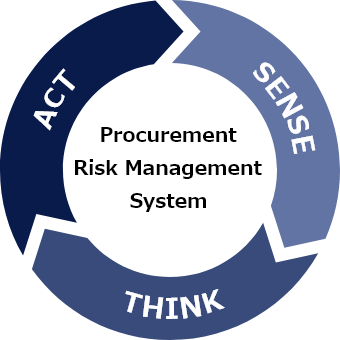The Hitachi Group attaches great importance to the sustainability of our value chains. To ensure the stable supply of products and services, whenever possible we engage in preemptive measures to ascertain and reduce risks. Hitachi has positioned strengthening supply chains as a key business challenge, and we work with our procurement partners to build flexible supply chains capable of responding to disasters and risks.
Aiming for proactive and resilient business operations even in business environments with high VUCA (volatility, uncertainty, complexity, and ambiguity), the Procurement Division aims to transform to an organization with functions contributing to Hitachi Group's business growth and risk management.
We are working with our procurement partners to enhance procurement BCP systems across Group companies worldwide so that, even if an incident occurs, business will not be disrupted and society will not be significantly impacted. To achieve these goals, we need to understand the impacts on supply chains and to implement measures and actions quickly.
We aim to build resilient supply chains that enable us and our partners to mitigate and control risks. This requires preparation such as visualizing, quantifying, and prioritizing risks in the supply chain (while taking into account the characteristics of each business), and implementing optimal measures and actions in advance.

![]()
Detect global and simultaneous risks early and identify risks in supply chains, taking into account purchase amounts and bottlenecks, etc.
Perform integrated risk assessment and analysis based on quantified procurement data.
Review optimal procurement strategies and supply chains to mitigate business risks.